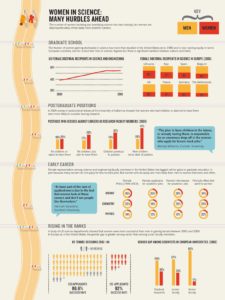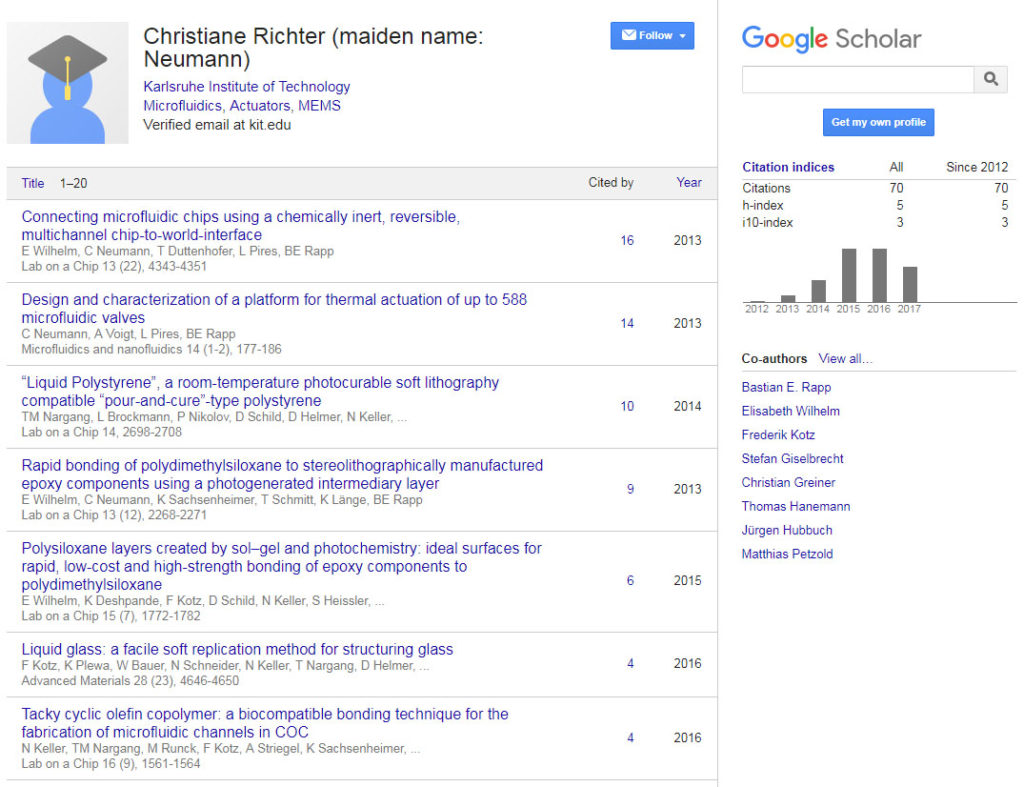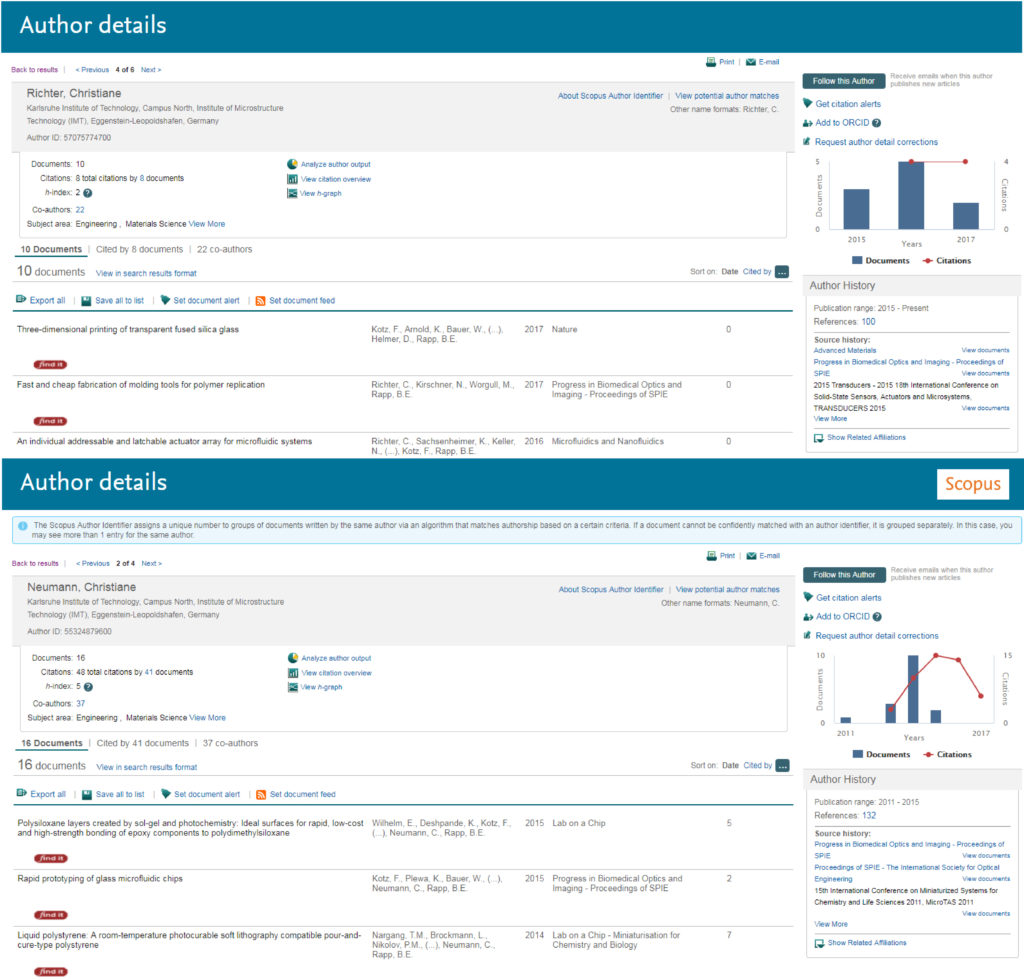Erin Martin is a PhD student studying at Curtin University in Perth with Professor Bill Collins and Professor Zheng-Xiang Li. Her work employs zircon geochronology and Lu-Hf isotope geochemistry to evaluate plate tectonic processes and paleogeography of the Neoproterozoic, with a focus on the orogens of Argentina and southern Brazil. Read more about her work here.
I recently had my first paper accepted for publication. I am halfway through my PhD and was delighted that one of the first big hurdles of my career had been crossed. As well as receiving congratulations and support from my colleagues and superiors, I was also confronted with a surprising comment. A male Professor saw it fit to impart some wisdom, telling me that “now you have been published as E. L. Martin, you have to keep that same name, otherwise your work will be lost”, following with “You know, so if you get married, your professional name will have to remain the same”.
Initially, I ignored the comment. I’m certain that it wasn’t meant to be controversial, perhaps simply advice of the way things are for a woman in Geology, which has for nearly two centuries been a boys club. However, as the days wore on, this innocuous comment festered in my mind. While the publication-name-change conundrum was something I had considered before, it was absolutely the last thing on my mind whilst I excitedly made the last few edits to my type-set manuscript.
The idea that I as a woman would have to choose between a married name and a professional name frustrated me. If I marry and have a family at some stage, should I risk my previous publications being overlooked or no longer linked to me? Or, should I choose to have a different surname to my possible future husband and children? Should I attempt to juggle two names and have separate home and work versions of myself? Should I attempt the double-barrel surname?

Women in Science face many hurdles. More here.
This is not just an issue faced by women in Geology but in all science disciplines and professional women in general. A good friend of mine was wrestling with the same problem before she got married a few years ago. She is a respected engineer working in the transport sector for state government (also in a male-dominated industry) and had established her name to be synonymous with a reliability and getting things done. She was concerned that the gravity of her name may be lost when people no longer recognised her familiar surname. Additionally, she found it a little awkward, if not unprofessional to add a disclaimer to each of her emails that she was now married and thus her name had changed.
It would be ignorant to suggest that only women are affected by name changes during their careers. But with Gen-X-ers and Millennials marrying later in life, and the number of women taking on careers in science also on the increase, I can’t help but think that the situation I have just encountered will become increasingly common.
So, as any good scientist should, I did some research.
A quick Google search reveals a couple of blog posts that have addressed the topic. One such post on Sciencewomen, from 2009 offers a list of options for an engaged PhD student considering whether she should publish under her married name before she weds. Suggestions include noting on the blogger’s resume and website that her name had changed once married, that it may only be a couple of papers that are published during her PhD before she marries and that the majority of papers that would impact her career would be probably published under her married name.
Commenters seemed to be advocates for hanging on to their maiden name, with or without taking the surname of their husbands. Some using their maiden name as a middle name, others hyphenating. Commenters that argued for not taking a married name often did so from personal experience – one woman had subsequently divorced and so was happy to have retained her maiden name, another mentioned a friend who had married twice, each time adopting the maiden-married name hyphenate and returning to her maiden name between marriages, the resulting chronology of her publications revealing the details of her personal life.
A paper published in the Journal of the American Society for Information Science and Technology in 2011, performed a study aimed at identifying how women who had published under multiple names were identified in indexes and citations (Pellack and Kappmeyer 2011). The literature review of the article highlighted, notably, that there was very little research on the effect of name change on citation rate stating “Even though women’s name changes have the potential to affect a large portion of the population, the way in which indexing services and citation methods deal with this is not well documented”. After investigating over 300 publications of women who had published with multiple names, the authors delivered several recommendations, including, that indexing databases (such as Google Scholar, Web of Science and Scopus) and citations use cross-references for multiple author names. Interestingly the work also recommended that authors should include their former name as part of their new name to allow researchers to find their earlier work, or use self-citations to promote authors previous work under a different name.
Indexing services such as Google Scholar have become significantly more powerful since these articles were written at the turn of the last decade. While I was unable to find Google Scholar policies explaining linking articles for authors with multiple names, I did find that it is extremely easy to change your profile name without your previous work being lost. Many women have taken to listing their profile names as First-name Married-name (maiden name: xxx) with publications from both names linked to their profile. Further, a Google Scholar search of an author with such a profile by either their married name or maiden name yields the same results. Another perk of having a Google Scholar account is that your h-index is automatically calculated based on the work linked to your profile. It should be noted, this is only the case if you have set up a Google Scholar profile.

A Google Scholar search reveals that work published under multiple names is linked the author and contributes to h-index.
Disappointingly, when I carried out the same married name/maiden name search using Scopus I did not get the same result. Instead, the search returned two separate author ID’s, two separate reference lists and two different calculated h-indexes. It seems that Scopus treats a person that has published under two different names as two different people.

Scopus does not group work published by a single author with multiple names. Note the author histories on the right.
Based on my investigations, I have come up with some recommendations to ensure that your body of research is as accessible as possible:
- Have an online presence – Create an account on an indexing service (such as Google Scholar or ResearcherID through Web of Science) and moderate your work. If you have a Google Scholar account, for example, you can search for your own work and link it to your profile. This minimizes name change issues and even problems with the various name formats adopted by various journals. A website is another great way to clearly show your work. Your homepage can also be listed on your profile of your preferred indexing service.
- Get an Open Researcher and Contributor ID (ORCID) – An ORCID is a unique code assigned to you, used to identify any work that you author without the worry of name ambiguity. This code can be added to your author details whilst submitting papers for publication. Alternatively, post-publication, you can go to the ORCID website and add your work to your ORCID. Scopus and Web of Science use ORCID’s as an additional author identifier, and RearcherID links directly with ORCID to ensure your author profile is up to date.
- Take whatever name you want – The more I read on this topic, the more I find that the concept of a ‘family name’ is evolving with time and varies with culture. In many nations, it is traditional for a family to take on the surname of the woman. Some families are happy with every one retaining their surname and giving the kids a hyphenated name. I have also read a fantastic article in The Guardian by a woman whose family adopted a completely new surname for their clan. The truth of the matter is, names change. Luckily we have the resources available for our work to never be lost, regardless of the name we choose to tag it with.
Further Reading and Resources:
Feature image: https://domesticsciences.wordpress.com/
Sciencewomen Blog: http://scienceblogs.com/sciencewoman/2009/06/12/ask-sciencewomen-what-name-sho/
If not my surname or my husband’s, could we call our child after a New Zealand volcano? https://www.theguardian.com/lifeandstyle/2017/may/20/if-not-my-surname-or-my-husbands-could-we-call-our-child-after-a-new-zealand-volcano?CMP=share_btn_tw
![]() This work is licensed under a Creative Commons Attribution-NonCommercial-ShareAlike 4.0 International License.
This work is licensed under a Creative Commons Attribution-NonCommercial-ShareAlike 4.0 International License.
